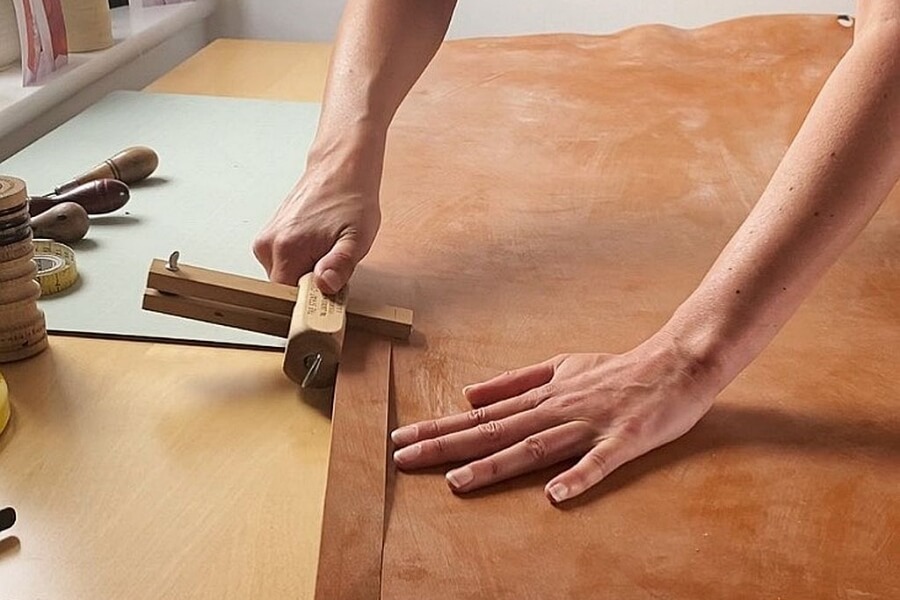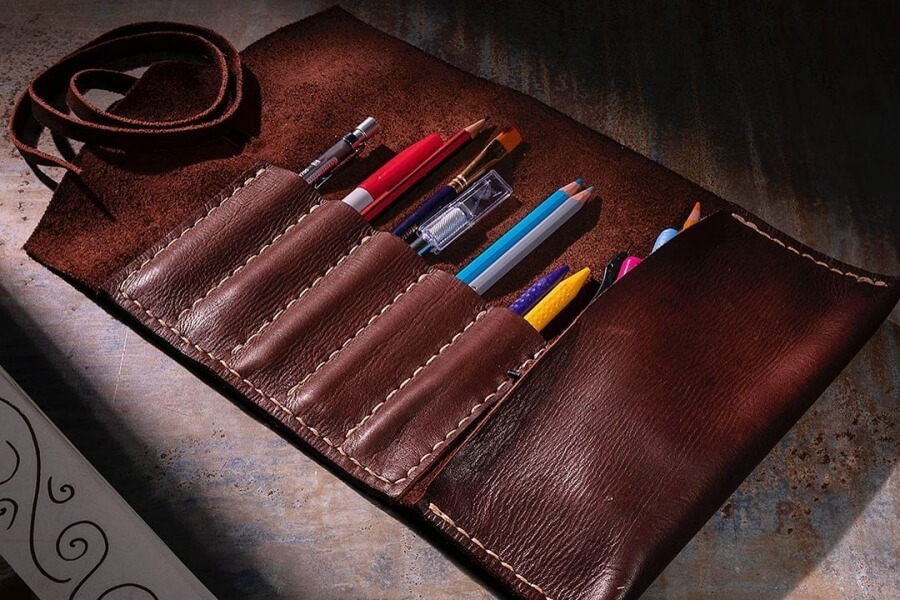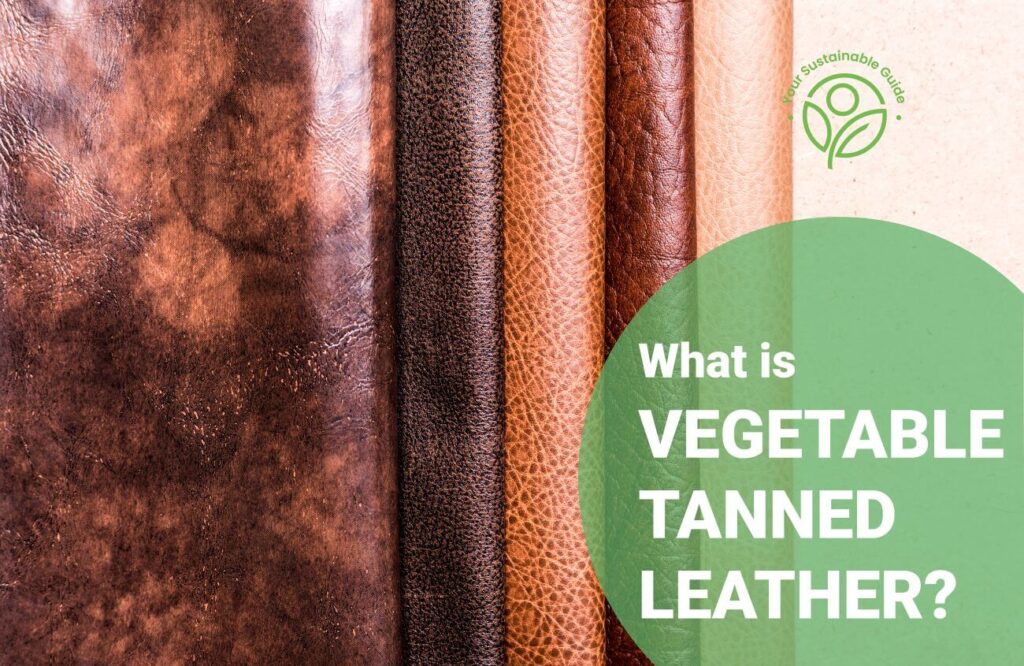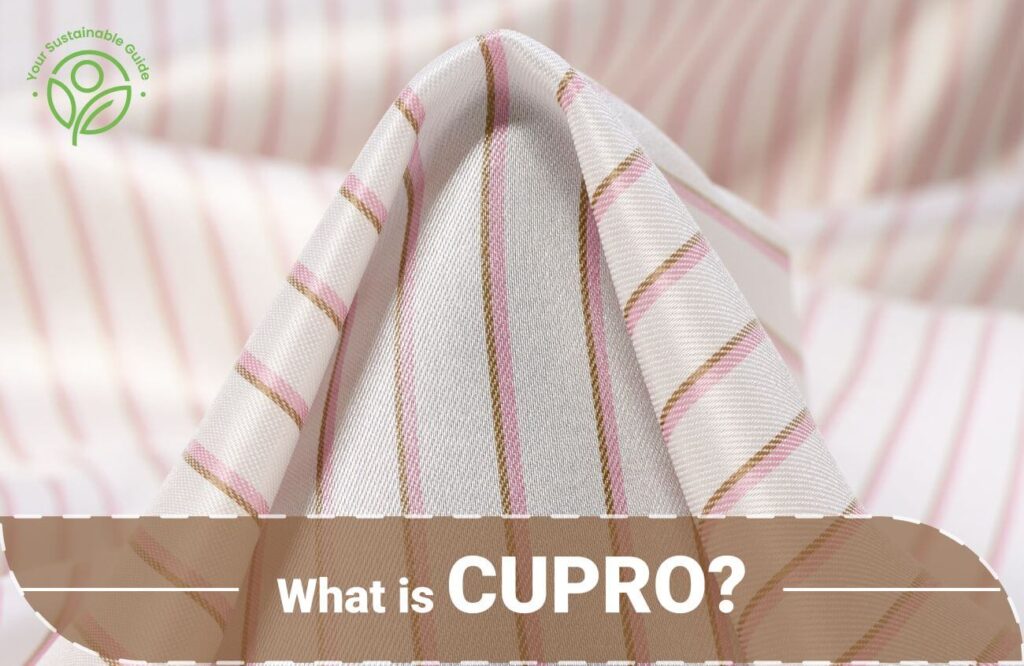Leather has been a part of humankind since time unknown. Primitive men raised animals for their meat and used their hides to stay warm. Many prehistoric tanning methods like Brain Tanning, Alum Tanning, and Vegetable Tanning were practiced in different parts of the globe. Today, while most of the traditional tanning methods have perished, the tanning process of making vegetable tanned leather still prevails.
With time, leather got ingrained deep in our lives and the present-day see this raw material to be widely used in making that belt you love, your favorite pair of shoes, bags, clothing, and everything in between. Leather is the icon of durability, but the horrors of this industry where animal rights are crushed every second are not unknown.
In our journey to unravel sustainable fabrics, today we bring to you vegetable tanned leather. Celebrated for its uniqueness by leather connoisseurs and skilled artisans, this leather variety is a favorite of many famous fashion brands. But is it really cruelty-free, sustainable, and ethical? Keep reading to know more.
What is Vegetable Tanned Leather?
Vegetable tanned leather is a unique type of leather made from tanning animal hides using tree bark and other tree sources that have ‘tannins’. Vegetable tanning is one of the oldest tanning methods where barks of trees like oak, mimosa, spruce, chestnut, valonea, etc, along with some varieties of nuts and shrubs, which contain natural tannins are used. These plant-based tanning agents are kept in a pit or tank along with animal hides, which alter the skin’s protein structure and convert them into leather.
While this process of tanning leather is time-consuming, it results in an exclusive aesthetic leather that ages beautifully and is functional. This process gives the leather a lighter and richer color making the surface more porous than regular leather. In addition, it is eco-friendly and long-lasting, making it perfect for furniture, bags, upholsteries, etc.

For millennia, leather has been used in all parts of the world for various purposes. The vegetable tanning process is one of the four prehistoric tanning methods, first implemented in Sumer (modern-day Iraq and Kuwait) some 5,000 years ago. The tanning method involved animal hides soaked in water tanks filled with Mimosa, Birch, Oak barks, and leaves to convert skins into leather which was then used to create clothes, bags, ropes, used as blankets, etc.
Later, vegetable tanning underwent many advancements by the Ancient Egyptians and Babylonian civilizations. However, the Romans were the first to control this industry bringing in artisans from Tuscany who perfected the art of making leather sandals and other products. Till the 19th century, vegetable tanning was the only process used to make leather. However, at present, only 10% of leather goods are made using this process. The remaining 90% of leather goods undergo chrome or mineral tanning, which is a leather-making process that uses synthetic tannins.
How and from What Vegetable Tanned Leather is Made?
Vegetable tanned leather is made using vegetable tannins found naturally in some plant species. Tannins are the yellowish or brownish organic substances found naturally in some barks, and other plant parts. It consists of gallic acid derivatives which are used to preserve the collagen of the animal skin in vegetable tanned leather production.
Tannins are found in considerable amounts in oak, chestnuts, birch, mimosa, quebracho, and spruce barks, along with olive leaves, tara pods, rhubarb roots, etc. Different plants hold tannins at varying concentrations. In addition to plant sources mentioned above, tannins are also found in wine, hops, and black and green tea.
Leather production starts as soon as the animal hides reach the tanneries. The first step is to ‘cure’ the skins with salt to prevent bacterial growth, followed by the ‘liming’ step which involves removing hair and fat residues by soaking the hides in large tanks of milk of lime solution (Calcium Hydroxide).
Next is the ‘de-liming’ process where the limed hides are soaked in another mix of a chemical solution to lower the pH level, and prepping the hides to go through further tanning processes.
The ‘tanning’ process starts with hides placed into drums of tanning agents and water solution. This blend is carefully made by the master tanners depending upon the desired type of leather attributes.
Now, over a span of 30-60 days, the hides are moved to different tanks containing varying tanning solutions at diverse concentrations, and with every change, they absorb more and more tanning agents to develop new physical properties. Once the vegetable tanning process is complete the hides are dried for a few days.
Furthermore, the hides are lubricated with a mixture of different conditioning oils and waxes to improve durability and color concentrations. Once lubricated, the hides are stretched, trimmed, and measured so that they can be refined further as per requirements. And this marks the end of the whole vegetable tanning process.
Is Vegetable Tanned Leather Sustainable?
Yes, vegetable tanned leather is more sustainable than other forms of chemically treated leather. This variety of leather is made from animal skins which is a result of the meat industry and if not used would end up in landfills, polluting air, water, and soil. Moreover, sustainably sourced plant-based tannins are used in the processing of veg tanned leather.
Vegetable tanning is the most natural and oldest form of tanning leather that is safe for the environment as not only harsh chemicals are refrained from in this type of tanning process but also the end result (veg tanned leather) turns out to be highly durable and long-lasting that also ages gracefully with a deeper, richer color and softer feel. In addition, since this leather is both made and processed from natural resources, it remains to be biodegradable.

Is Vegetable Tanned Leather Ethical?
Vegetable tanned leather is ethical in terms of not being hazardous to the workers involved in the manufacturing process, as all-natural and organic tannins are used in the whole process. Moreover, this ancient method of leather tanning also supports the employment of leather working groups and communities consisting of skilled craftsmen in vegetable tanned leather making.
True! It is a slow and intricate tanning process because it only involves natural agents but it is more eco-friendly as it has a minimal impact on the environment and ethical because it is safe for the leatherworkers and not toxic to the users, in contrast to the chemically treated chrome tanned leather.

Is Vegetable Tanned Leather Cruelty-free?
Usually, animal hides used for leather are a by-product of the meat industry. This fact is true but only to a certain extent, as many leather factories source animal hides from farmers who particularly raise livestock for a fine quality hide.
So while a huge portion of animal skins from the meat industry is being saved from getting dumped in landfills by getting re-used and re-purposed in the form of leather, a considerable portion of this industry still feeds into the horrors of raising and killing cattle and other animals solely for their skin. PETA has revealed evidence backing these truths, making vegetable tanned leather not completely cruelty-free.
Is Vegetable Tanned Leather Affordable?
Vegetable tanned leather is more expensive than chrome tanned leather and many other vegan varieties of leather. The reason behind this is, vegetable tanning is an ancient method, developed over centuries that involves the incorporation of natural and organic tannin agents that is carefully carried out by skilled artisans who have perfected this art over time.
In addition, this leather never fades out and resists to wear and tear because of the whole natural and skillful manual processing. At present, about 10% of the world’s leather is vegetable tanned because it is a time-consuming and intricate process. All these factors make vegetable tanned leather more expensive than most other leather varieties.
Vegetable Tanned Leather Certifications
Certifications you can check out to ensure in sustainably produced cruelty-free vegetable tanned leather is ICEC.
Properties of Vegetable Tanned Leather

- Vegetable-tanned leather is exceptionally durable and has the longevity and beauty that only an artisanally-crafted product can possess.
- Vegetable tanned leather develops a ‘patina’ over time with prolonged use and environmental exposure.
- Veg tanned leather is naturally dyed and full-grained.
- It has a natural leather smell developed by the rich aroma of natural tannins.
- As vegetable tanned leather ages, it darkens by light, moisture, and fat bringing in a luxurious and brighter look.
- Since veg-tanned leather uses natural tannins, the colors that the leather develops are rich and warm natural, earthy tones like shades of yellows, browns, beiges, and reds.
- Vegetable tanned leather products are resistant to wear and tear, but in case of any mishaps, they can be easily repaired.
- It is breathable and gets comfortable with use.
- Veg tanned leather has good flexibility, making it easy to be moulded for various products.
- It is perfect for burnishing to get a more enhanced look.
- Vegetable tanned leather products retain embossing effects.
- It is completely biodegradable, recyclable and the most eco-friendly leather.
Pros & Cons of Vegetable Tanned Leather
Pros of Vegetable Tanned Leather:
- Vegetable tanned leather is 100% biodegradable and recyclable.
- It is entirely made from natural resources making it a low-impact eco-friendly leather.
- Vegetable tanned leather is highly prized for its durability, longevity, and richness which develops over time, making it a possession for a lifetime.
- Products made from vegetable tanned leather are extremely breathable.
- It has a distinct woody aroma.
- Vegetable tanned leather develops a rich ‘patina’ which is an indicator of aesthetic beauty and superior quality, that only gets better with use.
- Because of the natural processing, it develops beautiful earthy tones of beige, red, brown, and yellow.
- As vegetable tanned leather ages, it becomes softer and the color turns deeper, enhancing the look.
- It is dyed naturally and has a full-grained surface.
- Vegetable tanned leather is resistant to wear and tear and is easily repairable.
- It reduces waste by repurposing animal skins which are a by-product of the meat industry.
- Vegetable tanning is an age-old craft. This process of leather production is keeping a tradition alive and providing employment to communities of craftsmen who have developed this craft for generations.
Cons of vegetable Tanned Leather:
- Vegetable tanned leather is not waterproof and can get easily stained with water or in presence of iron, if not handled with care.
- Vegetable tanning is a lengthy process and requires skilled craftsmanship.
- It is very expensive.
- Wearing vegetable tanned leather clothing feels stiff initially but with extended usage, the texture softens and becomes more comfortable over time.
- Since vegetable tanned leather is dyed naturally, it has limited color options.
Uses of Vegetable Tanned Leather

- Vegetable tanned leather has an array of uses. It is used in make high-quality clothing like jackets, dresses, trousers, skirts, etc. along with accessories like bags, wallets, gloves, shoes, boots, belts, and briefcases.
- Among other uses, veg-tanned leather is quite popular in making car seat covers, upholsteries, couches, headboards, etc.
How to Care for Vegetable Tanned Leather?
Vegetable tanned leather is renowned for its durability and longevity, and it can be used for a lifetime with proper care.
- To keep your artisan-made vegetable tanned leather products retain their beauty, keep them dry and don’t let them come in contact with water, especially in the first month of their usage, when the leather is still young.
- Keep them away from heat sources. Also, never blow-dry your veg tanned leather pieces, even if they get wet.
- Veg-tanned leather should not be cleaned using synthetic bristle brushes; only natural bristles like animal hair brushes should be used instead.
- If you use your vegetable tanned leather item frequently, use oil or conditioner made explicitly for this leather on a weekly basis to burnish and keep the shine intact.
- Occasionally wax you veg tanned leather pieces to keep them in the best condition.
Famous Brands That Use Vegetable Tanned Leather

Best Sustainable Alternatives to Vegetable Tanned Leather
Piñatex- Piñatex is made from pineapple leaves which are an agricultural by-product of the food industry. This leather can be a good alternative to vegetable tanned leather as it is durable, long-lasting, flexible, comfortable, and gives all the looks of pure leather. It is made using all-natural plant-based sources making it cruelty-free and vegan. Plus, it is more affordable than vegetable tanned leather.
Cactus Leather- Cactus leather is another great alternative to vegetable tanned leather. As the name goes by, cactus leather is made from cactus plants which is already a sustainable plant as it doesn’t require a lot of resources to grow and can easily thrive in harsh hot climates. Although it doesn’t have the strength and durability of vegetable tanned leather as it is soft and malleable in texture, but it is more affordable, vegan and way better than the toxic chrome tanned and other polyurethane (PU) leathers.
To Wrap it Up….
If you’re a leather connoisseur, chances are you are an ardent vegetable tanned leather admirer. And why not? Valuing age-old practices of craftsmanship and keeping the traditions alive not only provides us with the best of leather that lasts a lifetime but also helps the traditional artisan communities survive.
However, while most of the animal hides used in veg tanned leather is sourced from the meat industry, it is to be noted that cruel practices too exist where animals are slaughtered only for their skins. As mindful consumers, it is our duty to not feed into the unkind leather industry and only invest in pieces by checking for certified sellers who source animal hides from sustainable means.







